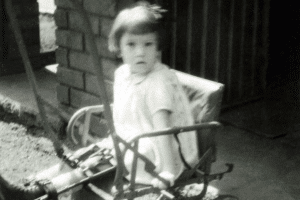Writing your memoirs, and sharing with your loved ones your stories, thoughts, and affections, can be a rich and life-enhancing experience. Your completed memoirs will be your legacy to the future—a record of your story and the times you have lived through and a glimpse into your perspective on the world, preserved in a book for your family and friends to enjoy.
Writing a memoir can, however, be demanding when attempted alone. Creating a fluent narrative from the many elements of a long life can be far from simple, and hopeful authors often feel overwhelmed by the task of organizing everything they want to say into meaningful order. If it is your ambition to write your memoirs but you are struggling to complete a project already embarked upon, or if you have yet to start and feel that some help is needed, a professional memoir-writing service, such as that offered by LifeBook Memoirs, can be the answer.
LifeBook Memoirs offers its authors a dedicated team that includes a project manager, an interviewer, a ghostwriter (What is a Ghostwriter?), and an editor. Together, we ensure that the writing process is kept easy and enjoyable. We guide you through the process of creating your memoir from first inspiration to the moment when you hold in your hands a beautifully bound book telling the story of your life.
Working with a ghostwriter
At LifeBook Memoirs, we employ professional ghostwriters to write our authors’ life stories. Your interviewer will record you telling your stories over the course of 12 90-minute face-to-face interviews, spread out over several months. Your ghostwriter will use the audio recording to craft and weave your stories into a free-flowing and pleasing narrative, written in a style of your choice and capturing the storytelling voice that is uniquely yours.
At every point in the process, you will be supported by your project manager and your interviewer. Working with a ghostwriter, however, will likely be a new experience for most authors, so these are our tips on how to build a productive relationship with your writer:
1. Jot down your family tree and a timeline
Start by writing a family tree, including names and dates of birth, marriage, and death. This will help your ghostwriter to understand your family structure. A timeline setting out the key events of your life—when you were born, your first job, and so on—will also help your ghostwriter.
2. Consider style and tone
Think about the style and tone in which you would like your book to be written. LifeBook Memoirs provides examples of three writing styles to choose from. Alternatively, you might prefer to define your own. Your ghostwriter will write your book in the style you prefer. If you are unsure, your interviewer will guide you in considering how you would like your book to be written.
3. Prepare
Make the most of your interviews by actively preparing for them. Decide which stories you would like to tell and assemble supporting information, so that you provide your ghostwriter with as much detail as possible. Your interviewer will prompt you with questions to explore these stories as fully as you wish. You may digress from your plan as your storytelling helps old memories to surface, but this is not a problem. Your ghostwriter will ensure that the threads of your stories are followed.
4. Be accurate
Consider how to provide your ghostwriter with the information they need from you to tell your stories accurately and comprehensively.
When you tell a story, try to include the following:
- When the events happened
- Where they happened
- Who was there
- How the events unfolded
Think about why you are telling the story: why does it matter? What does it contribute to your overall story?
Consider how to tell stories with technical or specialist elements: think about the information your readers—and, therefore, your ghostwriter—will need to understand what you are telling them. Put yourself in your readers’ shoes and consider what explanations would make your meaning clear.
Remember the detail: your story will be brought to life by detailed description, so remember to:
- tell your ghostwriter about the sights, sounds, and smells of each story;
- describe the appearance and character of the people involved;
- include plenty of detail in your explanations of what you do;
- describe how you felt at important moments.
Consider what you don’t want to say: your ghostwriter is briefed to weave everything you say in interviews into your manuscript, so don’t discuss things that you don’t want in your book. You retain control over the content of your book, and unwanted material can be deleted, but it is more productive to spend time on the stories you do want to tell than the ones you don’t.
Finally, your ghostwriter is a professional who takes pride in their work and is keen to write the book that you want, so help them by being clear about what you want to say and how you want to say it.
5. Decide your order and structure
Think about the order of your stories. Many authors like their life stories to be told chronologically; others prefer a thematic approach. There is no right or wrong way.
You do not have to tell your stories in chronological order or in themes; your ghostwriter will structure them into chapters that represent defined areas of your life. They will organize everything for you, building the narrative in a logically progressive manner.
6. Decide how you want to start and finish
Introductions and conclusions “bookend” your story. Introductions tell readers what to expect and explain why you have written your life story or who you have written it for. Conclusions and epilogues are an opportunity to reflect upon your life and what you have learned along the way. If you aren’t sure of what to include, your project team will be on hand to advise.
7. Review your manuscript
You will have regular opportunities to review the progress of your book and to:
- check that spellings are correct;
- check that events are in the correct order;
- check that stories are told accurately;
- consider whether the style is as you wish;
- consider whether the tone is as you wish; would you prefer it to be, for example, more lively, more thoughtful, less reflective?
Printed copies of your edited manuscript will be dispatched to you, and you will be able to make amendments on each review copy. These amendments will be implemented by your ghostwriter. For best results, write in black ink and in clear handwriting.
You will also have a Main Review and a Sign-Off Review to finalize your story and the photographs of your choice.
Your story will then be typeset and proofread, and you will be supplied with a preliminary version of the finished book to review before your book is sent to be printed and bound.
Ready to start writing your memoirs?
If you feel ready to start writing your memoirs or you would like to know more about working with LifeBook Memoirs, please contact us using the form below or by calling us. Our expert staff will be pleased to answer your questions and help you decide whether writing your life story with LifeBook Memoirs is right for you.

Written by Kate Parry, LifeBook Memoirs editor




